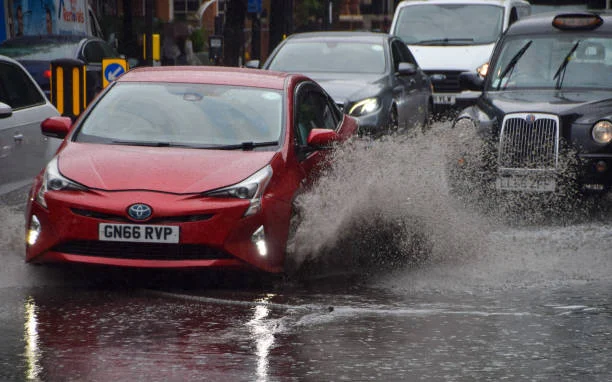We all know the sinking feeling when the sky opens up and the rain starts to pour. The road becomes slick, traffic slows, and every driver grips the wheel a little tighter or Car Feels Unsafe in Heavy Rain. But for many people, the real source of that unease isn’t just the weather — it’s the moment they realise their windscreen wipers aren’t doing their job. Poor visibility is one of the biggest hazards in wet conditions, and something as simple as upgrading to the best windscreen wipers in Australia can make all the difference to how safe you feel behind the wheel.
Visibility Is Your First Line of Defence
When driving in heavy rain, your tyres, brakes, and steering all matter — but none of them are much use if you can’t clearly see what’s ahead. Rain on its own isn’t the problem; it’s the combination of water, glare from headlights, and streaks or smears on the glass that can reduce your reaction time.
Even a slight delay in spotting a brake light or a pedestrian can be critical. That’s why maintaining your wipers and keeping your windscreen in top condition is more than a matter of comfort — it’s a core safety measure.
Don’t miss this next story—it’s packed with helpful info!
Why Wipers Fail When You Need Them Most
Wiper performance tends to degrade gradually, so you may not notice how bad they’ve become until you’re caught in a storm. The most common causes of poor performance include:
- Worn-out rubber — Over time, sun exposure and friction cause the rubber to crack or harden.
- Built-up grime — Dirt, pollen, and oil residue on the glass reduce wiping effectiveness.
- Bent wiper arms — If the arm doesn’t apply even pressure, certain sections of the windscreen are left untouched.
- Low-quality blades — Some budget blades simply don’t hold up in heavy weather.
By the time these problems are obvious, your visibility could already be dangerously compromised.
Signs It’s Time to Replace Your Wipers
Don’t wait for a rainstorm to discover your wipers are failing. Look out for:
- Streaking or smearing that doesn’t go away after a few swipes.
- Squeaking or chattering noises as the blade moves across the glass.
- Missed patches where water remains after wiping.
- Visible cracks, splits, or uneven edges on the rubber.
If you see any of these, it’s time to replace your blades before your next wet-weather drive.
The Role of the Glass Itself
Even with perfect wipers, a dirty or damaged windscreen will cause problems. Make it a habit to:
- Clean both the inside and outside regularly.
- Use a quality automotive glass cleaner to avoid residue.
- Occasionally de-grease the surface to remove wax or road film.
- Check for chips or cracks that could worsen in bad weather.
A smooth, clean glass surface helps the wipers make full contact and clear water more efficiently.
Washer Fluid — An Overlooked Ally
Your windscreen washer fluid is more than a convenience; it’s an essential part of maintaining visibility. Always:
- Keep the reservoir full, especially before long trips.
- Use a formula suited to the climate to avoid freezing or poor cleaning performance.
- Avoid plain water, which doesn’t break down grease and can promote mould growth.
Paired with good wipers, the right washer fluid ensures you can quickly clear away road spray, mud, or bug splatter.
Seasonal Considerations
Different seasons bring different challenges for visibility:
- Spring/Summer — Bugs and pollen can coat your windscreen quickly.
- Autumn — Fallen leaves and debris can get caught under the blades.
- Winter — Road salt and grit can scratch the glass if not cleaned promptly.
Adjust your cleaning routine and inspections to match the conditions you’re driving in.
Small Investment, Big Difference
Replacing your wipers isn’t expensive, but the benefits to safety and comfort are huge. Quality blades provide a smoother wipe, last longer, and hold up better under extreme conditions. For the cost of a tank of fuel, you can greatly improve your ability to see — and be seen — in heavy rain.
Staying Safe When the Skies Open
That uneasy feeling you get during a downpour isn’t inevitable. Often, it’s your brain responding to the reduced visibility and uncertainty caused by poor wiper performance. By keeping your windscreen and wipers in peak condition, you give yourself the best chance to drive confidently, even when the weather is at its worst.
Next time you sense the rain is about to fall, you’ll know that the difference between a tense, stressful trip and a calm, controlled drive could be as simple as what’s sitting on the end of your wiper arms for Car Feels Unsafe in Heavy Rain.
Continue your quest for knowledge—visit 2A Magazine for more.







